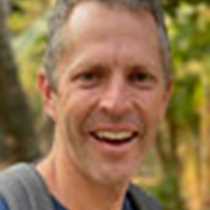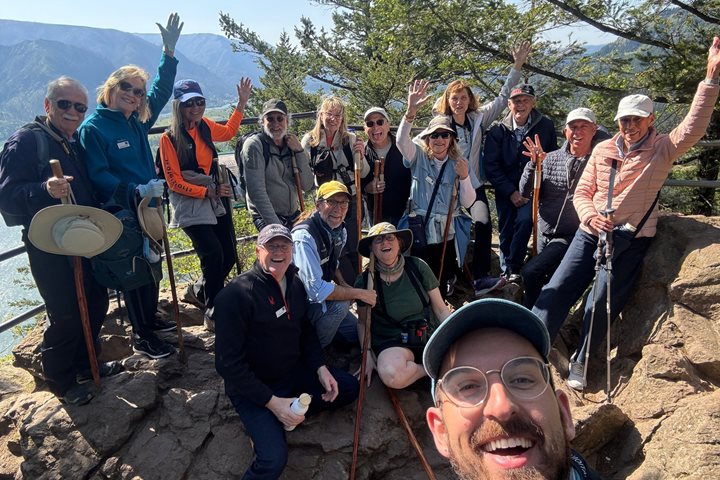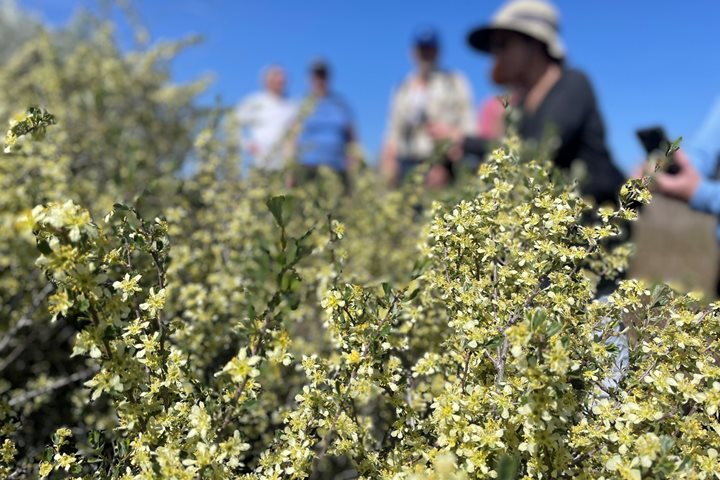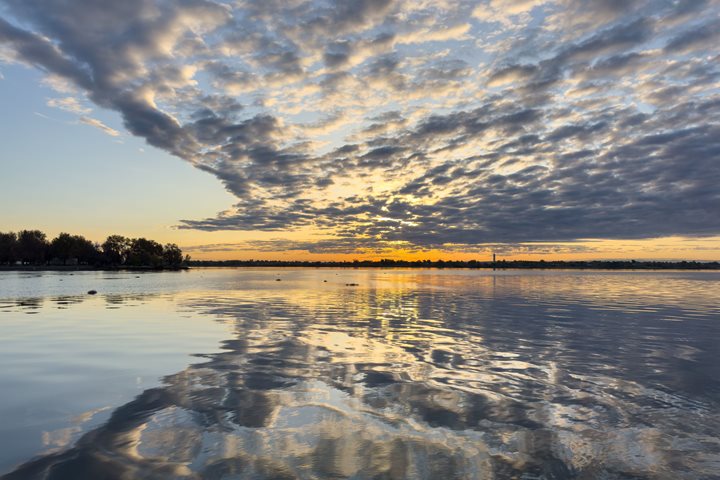On an early morning approach to Astoria, clean, gentle rain greeted guests aboard the National Geographic Sea Bird. The great Pacific Ocean, Astoria’s western door, releases precipitation eastward. That wet greeting contributes to shades of green, lush ground cover, and surviving giant Sitka spruce trees. Ironically, guests experienced the recorded description of the Corps of Discovery from 1805-1806 (wet, wet, wet). The city, by the way, was named to honor John Jacob Astor who sent two expeditions westward in 1811, five years after Lewis & Clark returned home.
4/24/2025
Read
National Geographic Sea Bird
Hood River
Unseasonably warm and dry weather continued to grace us as we proceeded with our expedition down the Columbia River. The morning was crisp as we disembarked in Hood River, Oregon, but quickly warmed up as we boarded our coaches. Our explorations began at Multnomah Falls, the number one tourist attraction in the state of Oregon. After we experienced this astounding cascade, some of our guests proceeded to Beacon Rock for a scenic climb up this 800-foot tall, aged lava plug. Others went to the Bonneville Fish Hatchery where we visited a local icon, Herman the sturgeon. Then both groups of explorers met at the Columbia Gorge Interpretative Center for Syncline wines and an overflowing helping of intriguing local history. As the superb weather continued, we voyaged back to National Geographic Sea Bird for a lovely afternoon of classic cruising down the Columbia River. Guests enjoyed the sun on deck or an engaging presentation on how climate change is affecting migratory birds. Complimentary water-level views of Multnomah Falls followed, and our last transit through a lock of this trip – a lovely passage through the Bonneville Lock and Dam. Photos by Doug Crispin and Alex Rubenstein









